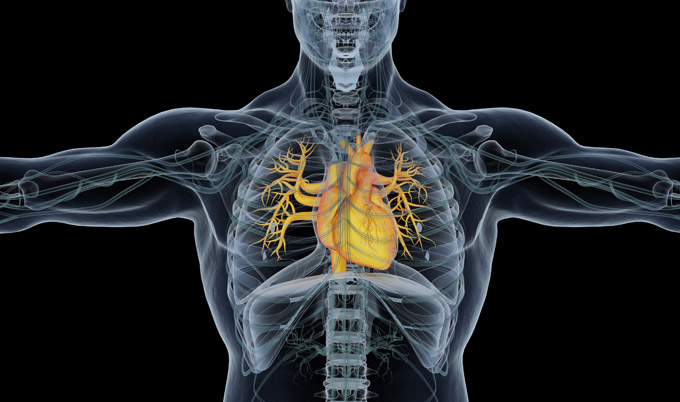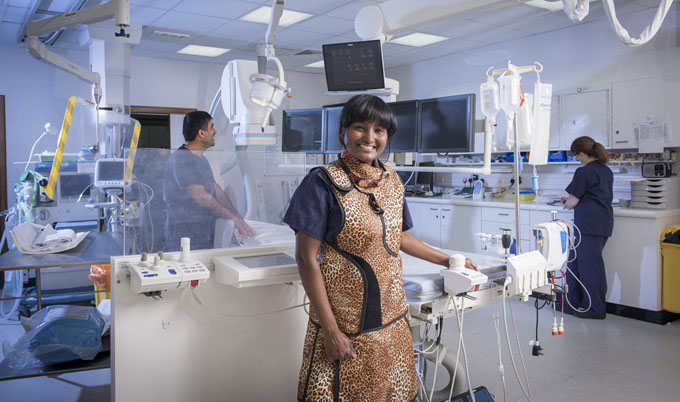Cardiovascular disease in women
Women missing out on treatment for their number one killer
Published on: 26 September 2024
Women are missing out on vital treatment for their biggest killer, cardiovascular disease, despite progress in the medical management of heart disease and stroke, experts conclude.
Females continue to be underdiagnosed, undertreated, and underrepresented in clinical trials in all areas of cardiovascular disease, says the consensus statement published online in the journal Heart.
The statement was drawn up by representatives from UK cardiovascular, nursing, and patient bodies affiliated with the British Cardiovascular Society. Lead author is Professor Vijay Kunadian from Newcastle University.

Addressing unmet needs
The aim of the consensus statement is to address unmet needs, ensuring parity of care, and improving the health outcomes of women with cardiovascular disease in the UK, and worldwide.
Professor Kunadian said: "Heart disease, in particular coronary artery disease, is the number one killer for women in the UK and worldwide.
"And yet, even to this day, we see that their symptoms are being ignored or women are told there is nothing wrong with them, or treated for something else, when all along they might be suffering from a heart problem."
Professor Kunadian said national databases are showing "year after year" that women are being undertreated and unfortunately that leads to higher death rates following heart attacks.
"We can't ignore that any more, it is about time that we do something about it," she said. “If women received the correct treatment, then their lives could be saved.
"People assume it is a men's disease - when a man complains he is more likely to get the attention from the ambulance or the doctors for example.
"We need to change the perspective of people and make people think this is also a woman's condition."
Conventional cardiovascular disease risk factors, such as high blood pressure and high cholesterol, are often not treated as promptly or as appropriately as they are in men, despite accounting for around half of all preventable cardiovascular disease deaths.
Women face particular cultural, societal, and financial issues, which magnify their heart disease risks as well as the influence of hormones, pregnancy, and the menopause, across their lifespan, notes the Statement. And their biology, physiology, and body shape not only affect their risks of cardiovascular disease, but also the effectiveness of diagnostic procedures and treatment.
The experts conclude that healthcare professionals and the public mistakenly think that women’s risk of cardiovascular disease is lower than it is in men.

Actions required
The statement sets out a series of actions for clinicians and their professional bodies to take in each of the major cardiovascular disease areas of: coronary artery disease; valvular disease; heart failure; inherited heart disease; congenital heart defects; and heart rhythm disorders.
These include:
- Raising awareness of traditional and women-specific risk factors for all types of cardiovascular disease
- Ensuring that women are included in cardiovascular disease research
- Making sure that the public and clinicians know that coronary artery disease is the leading cause of death for women
- Ensuring equitable access to specialist cardiac care, genetic testing, and family screening for women with inherited heart disease
- Addressing the under-representation of women in clinical trials of new cancer immunotherapy treatments
- Setting up registries to monitor cardiac toxicity as a result of cancer chemotherapy for everyone, and just for women
- Enhancing women’s participation in cardiac rehabilitation programmes by offering hybrid/virtual options
- Increasing clinician awareness of the strengths and limitations of each diagnostic method in women with confirmed or suspected cardiovascular disease
- Making women’s cardiovascular disease health ‘everyone’s responsibility’ by including this in primary care clinicians’ contractual obligations
- Leveraging influence to highlight and address sex biases in healthcare
Patients and those advocating on their behalf also have a role in advancing women’s cardiovascular disease care, says the statement.
For example, they should:
- Call for a holistic woman-centred approach to heart care that incorporates women’s experiences and insights
- They should engage the media, among others, to raise awareness about the importance of cardiovascular health for women.
- Tailor information to the unique needs of women
- Highlight heart conditions that predominantly or exclusively affect women
- Co-design training for healthcare professionals to become more attuned to women’s specific needs
The statement also calls for the establishment of women’s heart champions to offer peer-to-peer support and dedicated women’s heart hubs to check on conventional risk factors, such as blood pressure, cholesterol, and weight, and to offer lifestyle advice on diet and exercise. And a women’s health strategy should be created, it suggests.
Reference: Consensus statement: Advancing the access to cardiovascular diagnosis and treatment among women with cardiovascular disease: a joint British Cardiovascular Societies’ consensus document. Heart. Vijay Kunadian et al. Doi 10.1136/heartjnl-2024-324625



